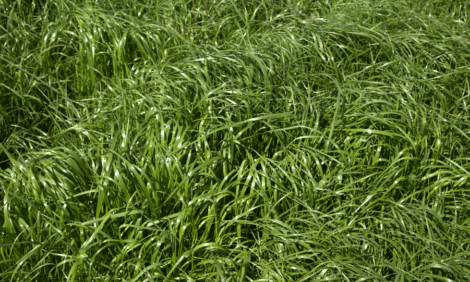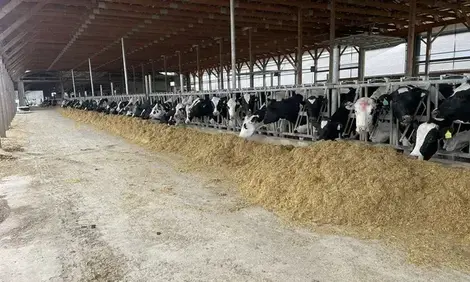



Strategies to Deal With High Corn Prices for the Beef Cowherd
By Grant Crawford and Nicolas Di Lorenzo, University of Minnesota Beef Team. This is the first in a two-part series on strategies for cattle producers to deal with high corn prices. Part 2 will focus on strategies for feedlot producers to deal with high corn prices.
With weaning time behind us and the winter season closing in, it is time for cow/calf producers to determine if they will need to purchase grain to help get their cows through winter and prepared for calving in the spring. In years past, cow/calf producers would simply purchase or retain corn and use this to add some energy to wintering rations for cows. These days, however, this is not a very exciting proposition considering cash corn prices are currently in the $3.50/bushel range across Minnesota, with a current basis of 10-40 cents and 2008 corn futures prices over $4.00/bushel. With these high corn prices, cow/calf producers need to first evaluate if supplementation is necessary, and if so, determine if corn is the best option. To compound the difficulties associated with high corn prices, many producers across Minnesota may be short on forage due to limited rainfall this summer, which may necessitate stretching forage supplies to ensure that there is enough to get through the winter.
If it is determined that supplementation for increased body condition in cows is not necessary, the nutrient requirements for wintering cows are quite low. After weaning, cows are no longer nursing a calf and they are still months away from calving, so they have their lowest nutrient requirements of any time throughout the year. Table 1 shows the energy requirements for cows relative to calving time.
| Table 1. Nutrient requirements for a 1,400 pound crossbred beef cow. | ||||
|
Months after calving
|
||||
|---|---|---|---|---|
| Nutrient1, % | 1-3 | 4-6. | 7-9 | 10-12. |
| TDN | 59 | 55 | 46 | 55 |
| Crude Protein | 10 | 9 | 6 | 8 |
| Calcium | 0.30 | 0.24 | 0.16 | 0.26 |
| Phosphorous | 0.20 | 0.17 | 0.12 | 0.17 |
| DMI, lbs. | 30 | 29 | 27 | 27 |
| Milk production, lbs. | 20 | 14 | 0 | 0 |
| 1TDN = Total digestible nutrients; DMI = Dry matter intake | ||||
As shown in Table 1, energy requirements in the first few months after weaning (months 7-9) are quite low. The 46% TDN and 6% crude protein (CP) could often be met through fall grazing or through feeding of many common grass hays. Grazing of available corn stalks (50% TDN) and soybean stubble (38% TDN) can also help in offsetting the need for supplementation during this time. However, if forages are limited, fall and winter grazing may not be available, and it may not be possible to provide enough harvested forage to meet nutrient requirements. This is when supplementation may become necessary.
Corn is often the first grain we think of when we need to stretch forage supplies or add condition to cows prior to calving. Corn contains approximately 90% TDN and 9% CP. However, it is important not to over feed corn to cows. The cow’s rumen contains many microbes that are generally either efficient at digesting grain or forage, but not necessarily both. If too much grain is suddenly fed to a cow that is accustomed to consuming forage, digestive disturbances such as bloat or acidosis may occur. In addition, because cows generally will be around for a number of years, it is important to keep their rumen healthy, and this is best accomplished through feeding adequate amounts of forage. Rules of thumb for supplementation of corn or any other highly fermentable grain such as barley, wheat, or milo are to supplement no more than six pounds of dry matter (DM) as grain, and to feed at least 16 pounds of DM as forage per cow daily.
With grain prices at their current levels, cow/calf producers can look toward other alternatives to corn, such as grain byproducts. With the growing ethanol industry, byproducts such as corn gluten feed and distillers grains are readily available and often at a price competitive to corn. Other byproduct feeds, such as wheat middlings, soy hulls, and beet pulp can also be incorporated into rations for cows to stretch forage supplies. Because these byproducts have very little starch compared with grains, they can be fed at higher levels than grain. These byproducts can be fed at up to 15 lbs of DM per cow daily as long as the minimum allowance of at least 16 pounds of forage DM is being followed. An exception to this high level of byproduct feeding could be distillers grains and corn gluten feed that are high in sulfur. It is important to have an accurate measure of the sulfur content of these byproducts before formulating rations for cows. The maximum tolerance for sulfur in cows is 0.50% of DM. If feeding distillers grains that consist of 1.0% sulfur (DM basis) as a supplement to grass hay containing 0.20% sulfur, we could feed 7 pounds of DM as distillers grains and 20 pounds of hay, which would result in a ration sulfur concentration of 0.45% sulfur, assuming normal consumption of water with water sulfate concentration of 200 ppm. If feeding distillers grains with a higher concentration of sulfur, or if in an area with high water sulfate, lower inclusions of distillers grains or corn gluten feed may be necessary.
Because cows have relatively low CP requirements, and byproduct supplements have relatively high CP concentrations, it is more valid to compare the price of corn to byproducts on an energy basis. Dr. Alfredo DiCostanzo from the U of M Beef Team recently presented a method to determine the value of various byproducts compared with corn on an energy basis. Table 2 shows these factors for five selected byproduct feedstuffs.
| Table 2. Price factors and target prices ($/ton) for various feedstuffs relative to corn (all on DM basis). | |||||
|
Corn Price ($/bushel)
|
|||||
|---|---|---|---|---|---|
| Feedstuff | Factor | 3.25 | 3.50 | 3.75 | 4.00 |
| Dried distillers grains | 40 | 130 | 140 | 150 | 160 |
| Wet distillers grains | 43 | 140 | 151 | 161 | 172 |
| Corn gluten feed | 34 | 111 | 119 | 128 | 136 |
| Soy Hulls | 32 | 104 | 112 | 120 | 128 |
| Wheat Midds | 33 | 107 | 116 | 124 | 132 |
| Beet Pulp | 29 | 94 | 102 | 109 | 116 |
The target prices indicated in Table 2 show the price at which that byproduct feedstuff would be a good buy relative to the current corn price. As long as the price of the byproduct feedstuff is less than the target price at the corresponding corn price, then the byproduct is a better buy than corn. For example, at a corn price of $3.50/bushel, wet distillers grains is a better buy than corn if it is less than $151/ton on a DM basis. For soy hulls, if corn is $3.50/bushel, soy hulls are a better buy than corn as long as they are less than $112/ton of DM. The cost of trucking should also be figured into these calculations. This is especially important with wet byproducts such as wet beet pulp or wet distillers grains where 60-85% of the feedstuff is moisture.
With the current high corn prices it is as important as ever to consider alternatives when looking to either stretch forage supplies or add condition to cows prior to calving. Fortunately, options exist that will help cow/calf producers avoid these high prices when wintering their cows.
Further Reading
| - | You can view Part 2 of this article by clicking here. |
January 2008



